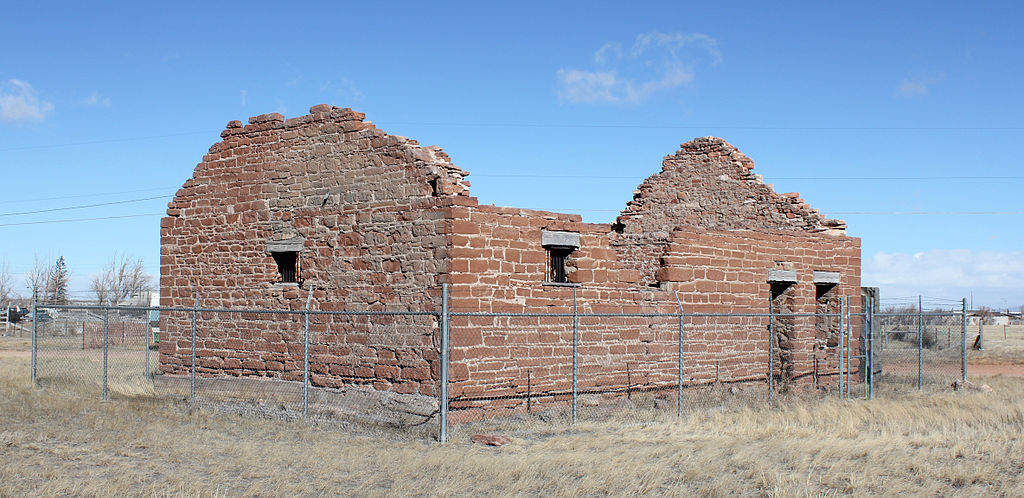Many historic forts in Wyoming have played important roles in the state’s past. These forts were built to protect settlers and travelers from attacks by Native Americans and to help with the expansion of the United States.
Many of these forts were also used as military forts that kept troops safe while they protected the newly formed United States.
Some of these forts can still be visited today, while others are now in ruins. Read on to learn more about the 15 historic forts of Wyoming!
15 Historic Forts of Wyoming
Wyoming became a state on July 10, 1890. In the early years, when it was a territory, several Indian tribes, including Crow, Shoshone, Lakota, and Arapaho, populated it.
As soon as settlers started to arrive and disrupt the way of the Native Americans, traveling in the West became dangerous, so settlers and the military started to build forts to protect those who dared venture out to the wild expanse of Wyoming.
1. Fort Bridger
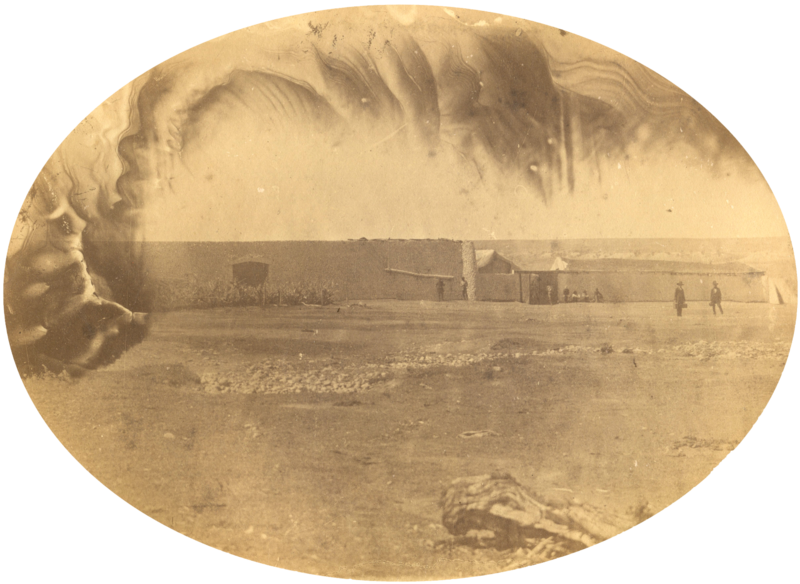
Fort Bridger was built in 1842 by Jim Bridger and Louis Vasquez. Both men were mountain men who were involved in the fur trading business.
The fort was initially built on the Black Forks along the Green River for fur trading. Fort Bridger quickly became a stopping point for resupply because it was located near the California Trail, the Mormon Trail, and the famous Oregon Trail.
During the Utah War in 1857, the Mormons set fire to Fort Bridger in an attempt to keep the fort out of the hands of the United States Army.
In 1858, the fort was rebuilt into a military post and was used as a military fort until 1890, when the fort closed. Fort Bridger was sold to the Historical Landmark Commission of Wyoming on June 27, 1927.
A few structures still stand, including a barn that housed the Pony Express and a wall the Mormons built for protection.
The fort is now known as Fort Bridger State Park, which encompasses 37 acres and houses four reconstructed historic buildings and 27 original historic buildings.
The park is open to visitors, who can take a self-guided tour, enjoy the museum, and watch historical reenactments. The grounds are open year-round from sunrise to sunset.
Fort Bridger State Park Visitor Info
2. Fort Casper
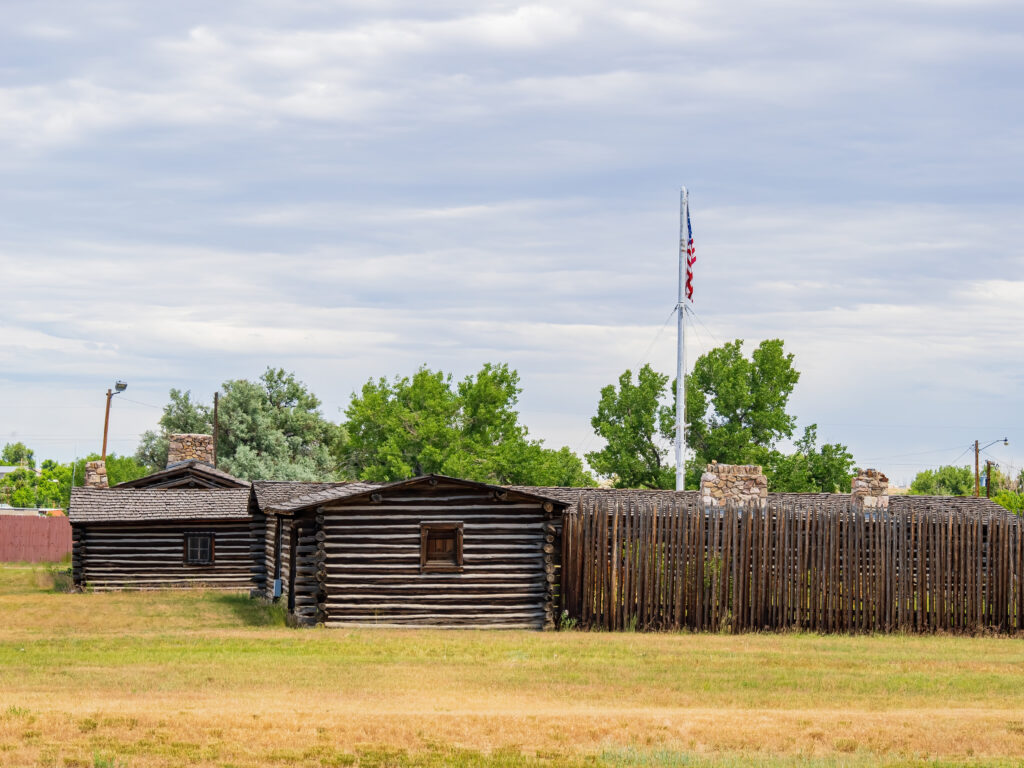
Fort Casper, built in 1859 along the banks of the North Platte River, was initially used as a toll bridge and trading post on the Oregon Trail.
In later years, the Army took over control of the Fort and named it Platte Bridge Station to help protect travelers and the telegraph lines from attacks by the Cheyenne and Lakota Indian tribes.
In 1867, the fort was abandoned, and the garrison was moved to Fort Fetterman.
The fort was reconstructed in 1936 and now resembles the years it was in service from 1863 to 1865.
Fort Casper is now owned by the city of Casper, Wyoming. There is a museum where you can see how the fort looked in the mid-1860s. You can also tour a replica of a Mormon ferry between 1847 and 1849.
Fort Casper Museum Information
3. Fort D.A. Russell

Fort D.A. Russell was built in 1867 and named after David Allen Russell, who fought in the Mexican-American War and the American Civil War.
The fort was originally built to protect workers on the Union Pacific Railroad from attacks by Indians. Still, it quickly became a military post that helped keep the peace between settlers and Native Americans.
In 1947, the United States Air Force took over the fort and, in 1949, renamed the Fort Francis E. Warren Air Force Base.
In 1975, part of the base became a National Historic Landmark District, where many buildings were reconstructed to show the fort’s transition from a calvary outpost to a modern air force base.
Fort D.A. Russell Tour Information
4. Fort Fetterman

Fort Fetterman was built in 1867 and was named after Colonel William O. Fetterman, who was killed in Red Cloud’s War on December 21, 1866, near Fort Phil Kearny.
The fort was initially built to protect workers on the Union Pacific Railroad. Still, it quickly became a military post used to help keep the peace between settlers and the Native Americans.
As the Indian wars died down in the area, the fort was abandoned in 1882. Parts of Fort Fetterman have been restored, and the fort has been added to the National Register of Historic Places.
Visitors can take a walking trail and view the old buildings.
Restoration has been done on an officer’s quarters and an artillery warehouse, where there are exhibits and artifacts you can view, along with some interesting historical facts about the fort.
Fort Fetterman Visitor Information
5. Fort Francis E. Warren
Fort Francis E. Warren was originally named Fort D.A. Russel. The fort was named after Colonel Francis E. Warren who fought in the American Civil War and the Indian Wars.
The fort was initially built to protect Union Pacific Railroad workers. However, it quickly became a military post that helped keep the peace between the workers and Native Americans.
In 1947, the United States Air Force took over the fort and, in 1949, renamed the Fort Francis E. Warren Air Force Base.
In 1975, part of the base became a National Historic Landmark District, where many buildings were reconstructed to show the fort’s different phases over the years, from a cavalry outpost to a modern air force base.
6. Fort Halleck
Fort Halleck was built in 1862 and was named after Major General Henry Wager Halleck, who served as the General-in-Chief of all Union armies during the American Civil War.
Fort Halleck was originally built to protect the Overland Trail, the telegraph lines, and the main route between Kansas and Salt Lake City, Utah, from attacks by Indians.
The fort was abandoned in 1867, and most of the buildings were dismantled and moved to other forts or towns in the area.
The fort was put on the National Register of Historic Places in 1970. All that’s left of Fort Halleck is an old abandoned blacksmith shop. The grounds where Fort Halleck once stood are now privately owned.
7. Fort Laramie
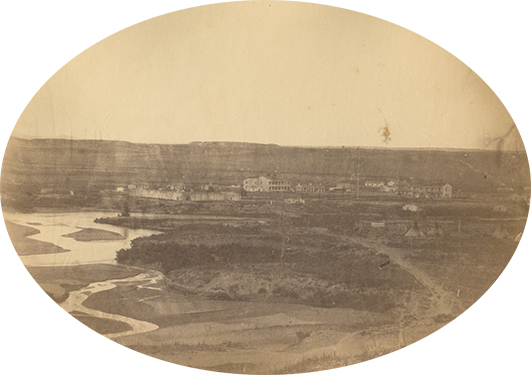
Fort Laramie was built in 1834 and was originally named Fort William. It was renamed Fort Laramie in 1841 after Jacques La Ramie, a French-Canadian trapper who had been killed near the site in 1821.
The fort was originally built as a fur trading post but quickly became an important stop for settlers heading west on the Oregon Trail.
The fort was also used as a base during the Mexican-American War and the American Civil War. It was eventually put on the National Register of Historic Places.
Visitors can tour some of the original restored buildings. There is also a museum on site with exhibits about the fort’s history and the people who lived there.
Fort Laramie Visitor Information
8. Fort Phil Kearny

Fort Phil Kearny was built in 1866 and was named after Major General Phillip Kearny, a prominent figure during the Civil War.
The fort was used as an outpost for the United States Army to protect gold miners and stagecoaches from hostile Indians along the Bozeman Trail to and from the Oregon Trail.
The fort was abandoned in 1868 after a series of battles with the Sioux and Cheyenne Indians, known as the Fetterman Massacre and the Wagon Box Fight.
The Cheyenne Indians eventually burned it down. In 1966, the fort was put on the National Register of Historic Places. Visitors can take a walking tour and see some of the original restored buildings.
Fort Phil Kearny Visitor Information
9. Fort Platte
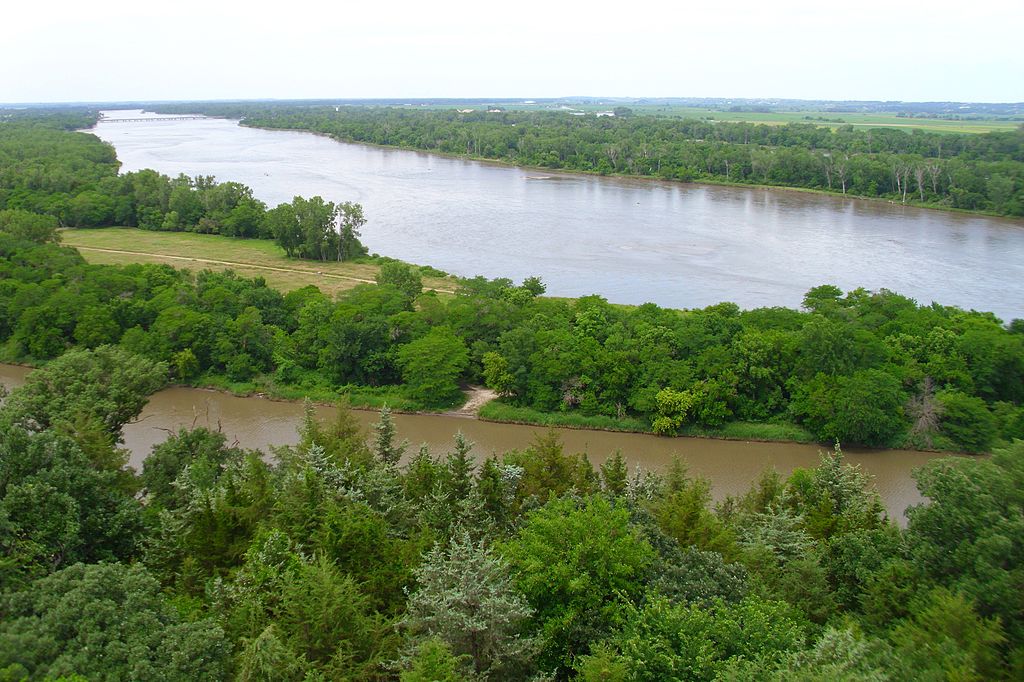
Fort Platte was established in 1840 and built by Lancaster Lupton, an army officer who went into the fur trading business.
Fort Platte competed with Fort Laramie, just a mile away on the North Platte River. Lupton had a fort in Colorado named Fort Lupton, which had a successful supply system that he incorporated into Fort Platte, beating out the competition from Fort Williams nearby.
The fur trading firm Pratte and Cabanne took over the fort after Lupton went bankrupt in 1842.
They ran the fort until 1845 when they moved operations to Fort Bernard. The fort was abandoned, and no remnants are left except for a historical marker.
10. Fort Reno

Fort Reno was established on August 15, 1865, as a U.S. military installation to help protect travelers on the Bozeman Trail from hostile Native American tribes.
The fort was named after Major General Jesse Lee Reno, who had been killed in the Battle of South Mountain in Maryland on September 14, 1862.
When the Fort Laramie Treaty of 1866 ended the Red Clouds War with the Indians, Fort Reno, along with a few other forts in the area, was abandoned.
As soon as the military left the fort, Cheyenne Indians burned most of it down. But later, it was used to house supplies for the military.
All that’s left of Fort Reno are a few remnants of buildings and a commemorative plague.
11. Fort Sanders
Fort Sanders was originally named Fort John Buford and was later renamed Fort Sanders after General William P. Sanders, who had been killed at the Siege of Knoxville during the Civil War.
The fort was made of wood in 1866 and was used to protect travelers on the Overland Trail from attacks by Indians.
Later, in 1869, the fort became a refuge for workers on the Union Pacific Railroad. Once Fort D.A. Rusell and the town of Laramie were built nearby, use for Fort Sanders declined, and the War Department eventually sold the buildings off in 1882.
The only building on the original fort grounds is the guard’s house made of stone.
12. Camp Stambaugh
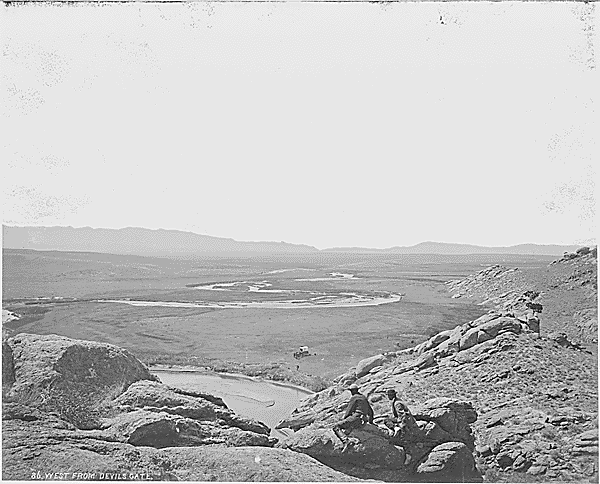
Camp Stambaugh was built by the United States Army and was established in June of 1870 in the Wind River Mountains. It was used to protect miners who worked in the sweetwater mining district.
The camp was named after 1st Lieutenant Charles B. Stambaugh, 2nd U.S. Calvary, who had been attacked and killed by Indians a month earlier while he was protecting settlers.
Once miners left the area for other more prosperous regions, Camp Stambaugh was abandoned in 1878.
13. Fort Supply
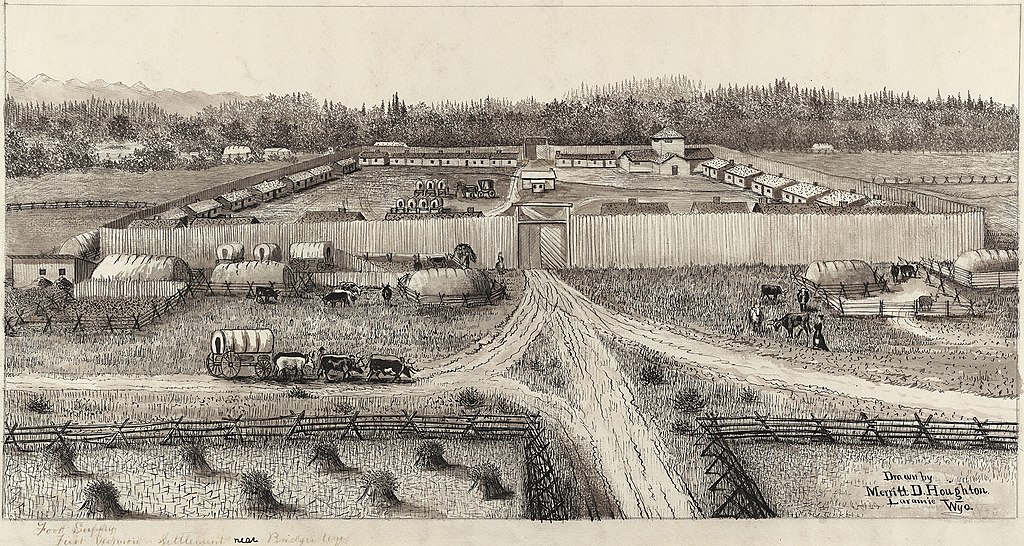
Fort Supply was built by the Mormons in 1853 to secure their interests in the Green River County area. The fort was also used as a local missionary and supplied food and provisions for travelers to Salt Lake City, Utah.
It was abandoned during the Utah Wars in 1857.
Today, a monument is located at the fort’s site. The monument is now part of The Fort Bridger State Historic Site.
14. Fort Washakie
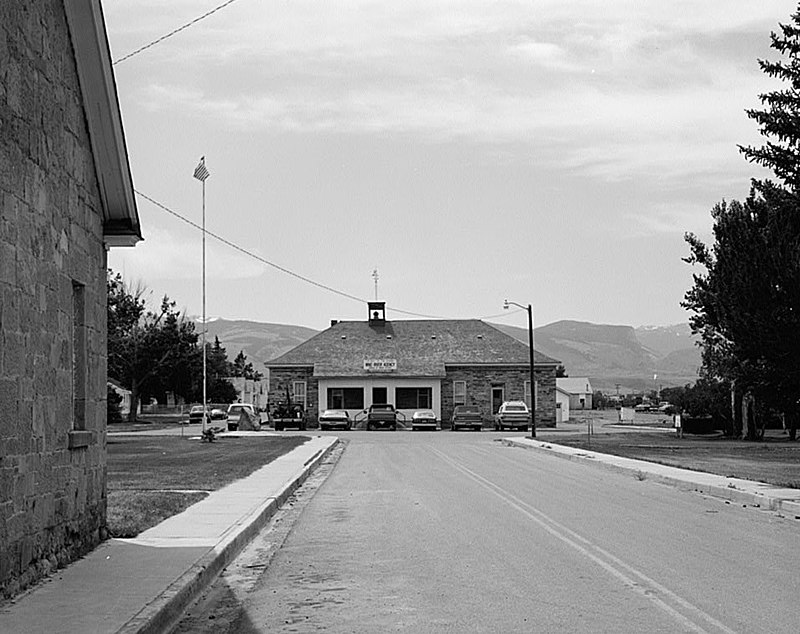
Fort Washakie was established in 1869 as a military post to help protect travelers on the Overland Trail from attacks by Native Americans.
It was named after Chief Washakie of the Shoshone tribe, who had signed several treaties with the United States government, including the Fort Bridger Treaties of 1863 and 1868.
The military used Fort Washakie until 1909 when it was signed over to the Shoshone Indian Agency. It is now located in the Wind River Indian Reservation. Chief Washakie, along with Sacajawea, is said to be buried in the cemetery here.
Fort Washakie Visitor Information
15. Fort Yellowstone
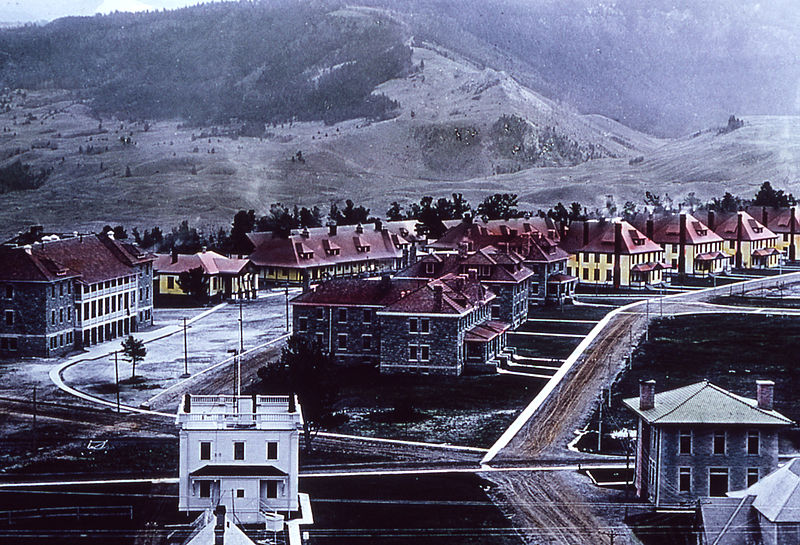
Fort Yellowstone was originally called Fort Sheridan After General Philip Sheridan,, who sent the first Cavalry to the Mammoth Hot Springs area. Fort Yellowstone, as we know it today, was established in 1891 as an Army fort.
The fort functioned from 1891 to 1913 and became rather large, with many buildings added over the years.
In 1918 the National Park Service took ownership of the fort. Historic Fort Yellowstone is located in the heart of Yellowstone National Park. Visitors and tours are welcome!
Fort Yellowstone Visitor Information
Conclusion – Historic Forts of Wyoming
Wyoming has a fascinating history, which can be found in the many forts constructed in the nineteenth century.
Wyoming was a dangerous place during the Wild West, and if it wasn’t for these forts to protect travelers along the numerous trails that ran through Wyoming, I don’t believe this country would be what it is today.
If you are ever visiting Wyoming, check out some of these forts and get a better sense of the history behind them. Seeing these places and being there is the only way to get a feeling of how it was in the past.
Thank you for reading. If you have been to any of these forts in Wyoming, please let us know in the comments section below. I would love to hear about your experience.

Cory is a website owner and content creator who enjoys fishing, history, coin collecting, and sports, among other hobbies. He is a husband and father of four.
Romans 15:4 For whatever was written in former days was written for our instruction, that through endurance and through the encouragement of the Scriptures we might have hope.


